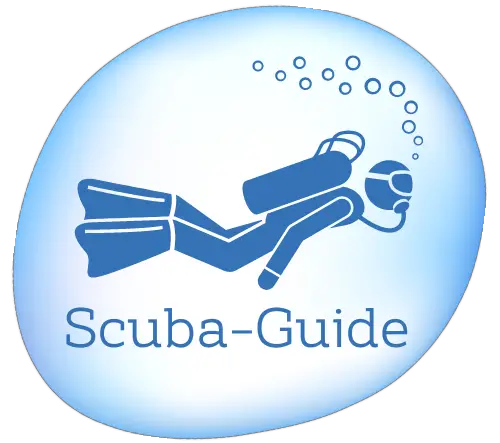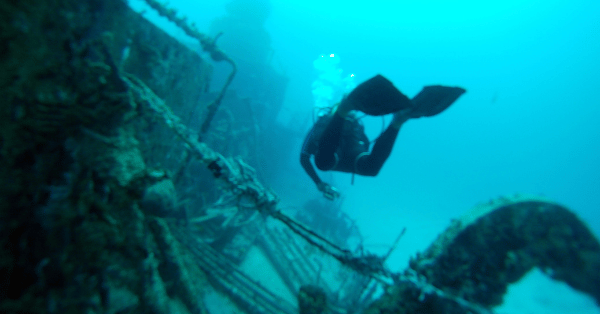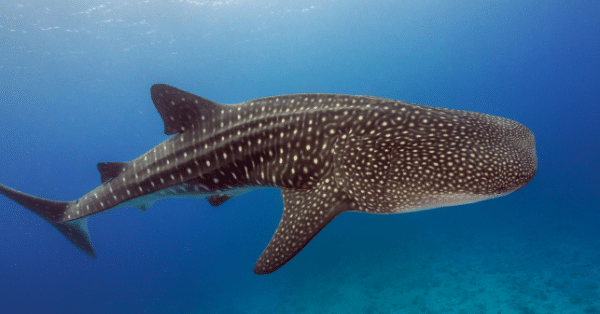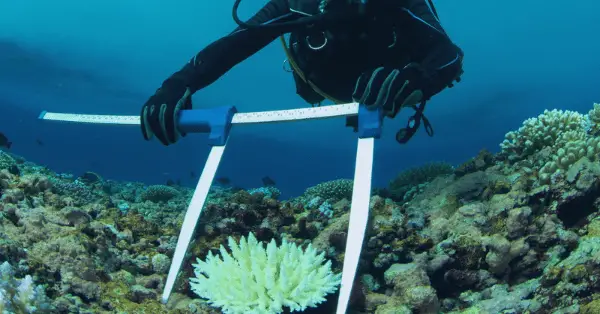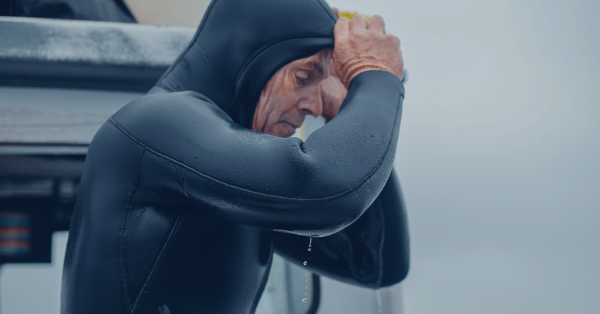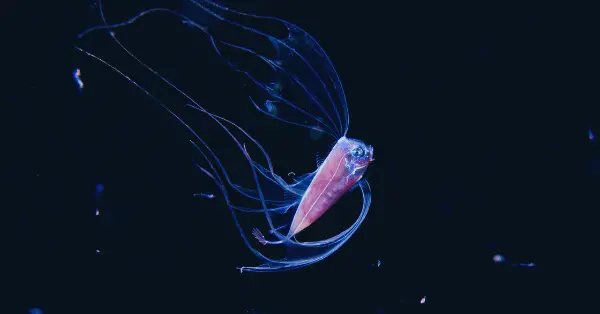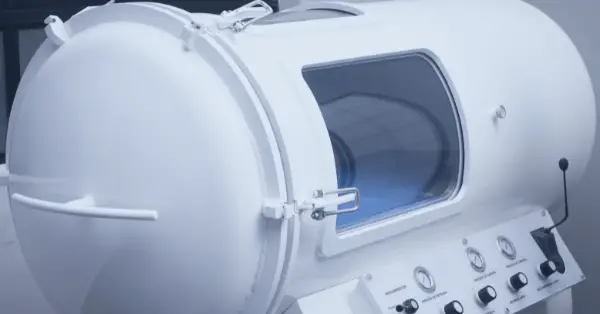How Does a Rebreather for Scuba Diving Work?
A rebreather is a type of scuba diving equipment that recirculates exhaled air, removing carbon dioxide and replenishing oxygen for breathing. A diver rebreathes the recycled air – hence the name.
This not only increases the amount of time you can spend underwater but also reduces the amount of gas you need to carry.
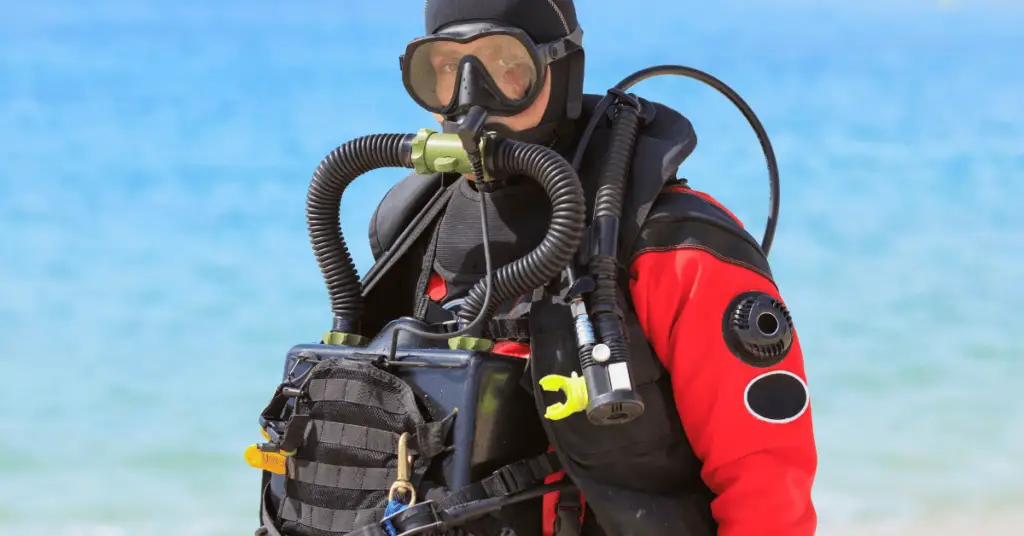
Unlike traditional scuba gear, which releases exhaled air into the water, a rebreather recirculates exhaled air back into the system, removing carbon dioxide and replenishing oxygen. It’s a closed loop.
Key Takeaways:
- A rebreather is a type of scuba diving equipment that recirculates exhaled air, removing carbon dioxide and replenishing oxygen for breathing.
- Rebreathers can increase the amount of time you can spend underwater and reduce the amount of gas you need to carry.
- Instead of releasing exhaled air into the water, a rebreather recirculates it back into the system, removing carbon dioxide and replenishing oxygen.
Understanding the Basics of a Rebreather
Rebreathers are complex scuba diving devices that provide divers with the ability to breathe underwater for longer periods while decreasing the risk of decompression sickness.
At its core, a rebreather recycles the air that the diver exhales, removing carbon dioxide and replenishing it with oxygen. This process happens within a closed loop system, without the release of any bubbles into the water.
The essential components of a rebreather include a breathing loop, carbon dioxide scrubber, and oxygen supply. The breathing loop consists of a mouthpiece, hoses, and a mask that allows the diver to breathe in and out. The carbon dioxide scrubber removes carbon dioxide from the exhaled air by using a chemical reaction, while the oxygen supply maintains a suitable amount of oxygen in the loop.
It’s critical to note that rebreathers are not the same as traditional scuba diving apparatuses. In scuba diving, an open-circuit system supplies air to the diver and releases it back into the water. In contrast, a rebreather recycles the air and continually monitors the mixture of gases, providing a more efficient way of diving for longer periods without having to surface as often.
The safety of a rebreather depends on proper maintenance, setup, and use. Attempting to dive with a poorly functioning or incorrectly configured rebreather can lead to serious injury or death. Always thoroughly read the manufacturer’s instructions before using a rebreather, and undergo certified training to ensure safe and successful diving.
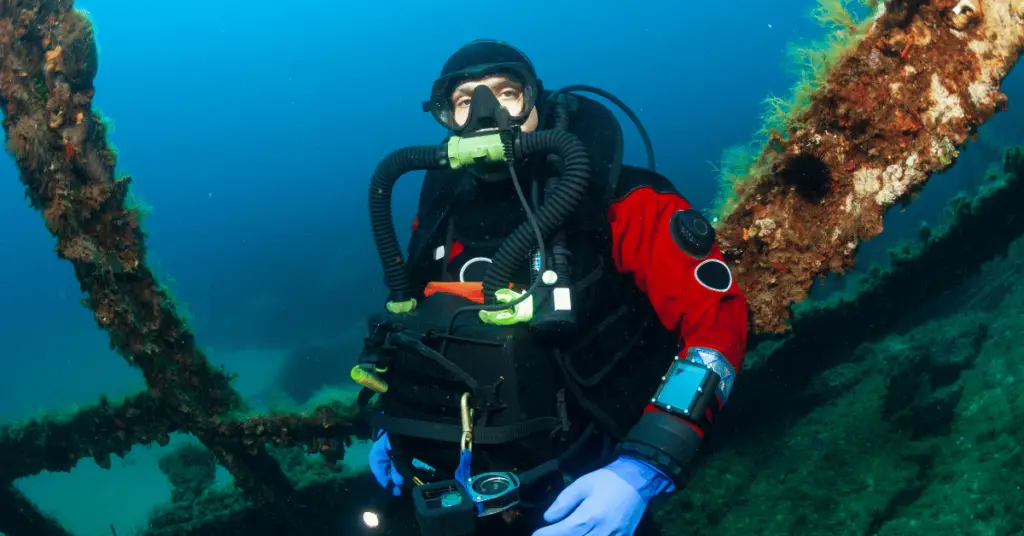
How long and deep can you dive with a rebreather?
The duration and depth of a dive with a rebreather depend on several factors, including the type of rebreather used, the diver’s oxygen consumption rate, and the specific dive conditions. Electronically controlled diving rebreathers can automatically maintain a safe partial pressure of oxygen and are often integrated with decompression computers to monitor the diver’s status. However, the complexity of rebreather technology introduces specific hazards and requires thorough training and experience for safe operation.
The depth limit is also influenced by the potential for oxygen toxicity and the need to avoid decompression sickness, making careful planning and monitoring essential for deep and extended dives.
The Function of a Rebreather’s Oxygen Replenishment System
When diving with a rebreather, you rely on its built-in system to replenish the oxygen you consume. The oxygen replenishment system is a vital feature of a rebreather, which ensures that you receive a steady supply of breathable air throughout your dive.
The system works by purging the carbon dioxide you exhale and replacing it with fresh oxygen, while also monitoring and adjusting the oxygen and other gases in the breathing loop to maintain a breathable mixture.
Many rebreathers use electronically or manually controlled oxygen injection valves (O2 valves) to maintain a constant oxygen level in the breathing loop. When the oxygen level falls below a set point, the O2 valve releases additional pure oxygen, ensuring that you receive a consistent oxygen supply.
The proper function of the oxygen replenishment system is crucial to a safe and enjoyable dive with a rebreather, as it enables you to stay underwater longer without the need to resurface and replace your tanks.
Benefits of a Rebreather’s Oxygen Replenishment System
The use of a rebreather’s oxygen replenishment system also presents other advantages besides extended dive time, such as:
- Better gas management as the system recycles unused oxygen and prevents wastage
- Reduced noise, bubbles, and light reflection, which consequently decreases the risk of scaring off marine life
- Improved thermal insulation as rebreathers usually have smaller tanks, which require less cooling water and maintain body temperature longer
Exploring the Role of Carbon Dioxide Scrubbers in Rebreathers
A rebreather’s carbon dioxide (CO2) scrubber is a vital safety component that ensures a breathable gas mixture for scuba divers during extended dives. As you breathe, you exhale carbon dioxide, which can be harmful if not removed from the breathing mixture. The scrubber’s primary function is to remove exhaled carbon dioxide from the air that divers inhale, replacing it with fresh oxygen, and creating a breathable gas mixture.
The scrubber consists of a canister filled with a chemical absorbent, usually a type of soda lime that removes CO2 as air circulates through it. The duration of the scrubber’s effectiveness, also known as the “work time,” is the time that it takes for the chemical absorbent to reach its CO2 saturation point, becoming ineffective. Proper maintenance and monitoring of the scrubber’s “work time” are essential to ensure the safety of the diver while using a rebreather.
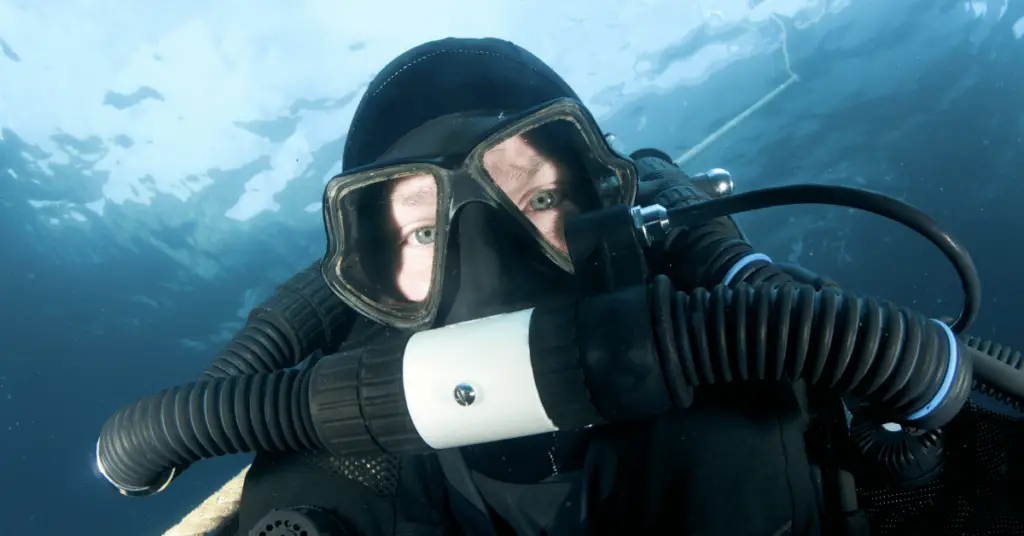
Importance of Carbon Dioxide Scrubbers for Rebreather Safety
Carbon dioxide scrubbers play an integral role in maintaining rebreather safety. They help prevent the accumulation of CO2 in the breathing gas, which can cause hypoxia, headaches, unconsciousness, and, in extreme cases, lead to divers’ death. A well-maintained scrubber helps ensure optimal conditions for dive safety, making the difference between life and death in some situations.
Properly maintaining CO2 scrubbers is a vital step in ensuring the safety of divers using rebreathers. It’s essential to follow the manufacturer’s guidelines for the installation and replacement of CO2 scrubbers, which may vary based on the particular equipment. Keeping track of dive times, monitoring your scrubber “work time,” and taking precautions against contamination are all critical safety measures.
Did you know? Carbon dioxide scrubbers are not only used in scuba diving rebreathers but also in spacecraft, submarines, and even in the air we breathe inside closed buildings and spaces.
Unveiling the Complexity of Rebreather Circuitry
Rebreathers are equipped with sophisticated circuitry systems designed to maintain a safe and breathable gas mixture while diving. This circuitry typically includes gas sensors, valves, and electronics that continuously monitor and adjust the gas mixture to ensure that divers receive the proper amount of oxygen and avoid dangerous levels of carbon dioxide.
The gas sensors play a crucial role in detecting changes in oxygen and carbon dioxide levels in the rebreather. This information is sent to the electronics, which adjust the mixture of gases by controlling the flow of oxygen and other gases through the breathing loop.
Valves within the circuitry are responsible for directing the flow of gas throughout the rebreather system. These valves work in tandem with the sensors and electronics to maintain the correct composition of gases in the breathing loop.
The Importance of Gas Sensors
Gas sensors are critical components of rebreather circuitry as they provide real-time measurements of oxygen and carbon dioxide levels. Without these sensors, divers would have to manually monitor their gas mixture, which is not only time-consuming but also highly risky.
Modern rebreathers are equipped with advanced gas sensors that are specifically designed to withstand the harsh underwater environment. These sensors are highly sensitive and provide accurate readings even in extreme conditions. However, it’s essential to ensure that these sensors are properly calibrated before use to maintain their accuracy.
| Gas Sensor Types | Function |
|---|---|
| Oxygen Sensor | Detects the level of oxygen in the breathing loop and sends this information to the electronics for adjustments. |
| Carbon Dioxide Sensor | Detects the level of carbon dioxide in the breathing loop and sends this information to the electronics, which activate the scrubber to remove carbon dioxide. |
| Depth Sensor | Detects the depth of the diver and sends this information to the electronics, which adjusts the gas mixture to compensate for changes in ambient pressure. |
A rebreather’s circuitry system is an intricate network of components that work together to maintain a safe breathing environment while diving. The system is designed to continuously monitor and adjust the gas mixture to ensure that divers receive the proper amount of oxygen and avoid dangerous levels of carbon dioxide. By relying on gas sensors, valves, and electronics, rebreathers have changed the way we dive, opening up new possibilities for exploration and adventure.
Navigating the Different Types of Rebreathers
If you’re considering investing in a rebreather, it’s essential to understand the various types available and their specific functions. Rebreathers can be categorized into two main types:
Closed Circuit Rebreathers (CCR)
Closed circuit rebreathers are the more advanced of the two types, featuring a fully enclosed breathing circuit. They’re commonly used in technical diving, allowing for longer dives and reduced gas consumption. CCR rebreathers remove carbon dioxide from exhaled air and add oxygen as needed, allowing the diver to recycle gas and stay underwater for more extended periods. However, these rebreathers require more training and maintenance and can have a higher cost.
Semi-Closed Circuit Rebreathers (SCR)
Semi-closed circuit rebreathers are more straightforward in design, featuring a partially enclosed breathing circuit. They’re frequently used for recreational dives, as they offer a longer dive time than traditional scuba equipment but are less complex than CCR rebreathers. An SCR rebreather filters a diver’s exhaled air to remove carbon dioxide, reducing gas consumption and providing warm, humidified air that reduces fatigue in colder waters.
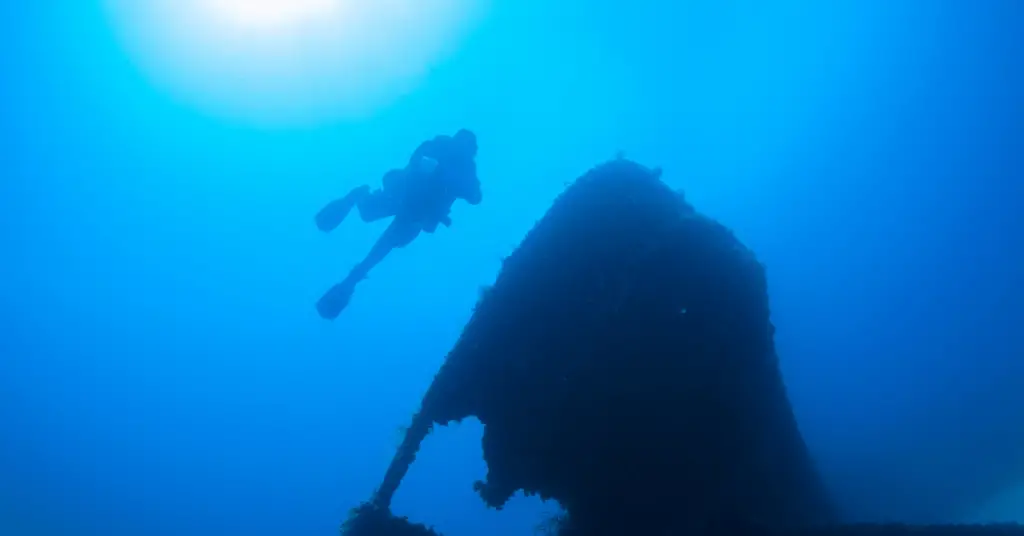
Maintenance of your rebreather
Maintaining a rebreather is crucial for ensuring its safe and efficient operation. Key components requiring regular maintenance include the scrubber, counterlung, breathing hoses, mouthpiece or facemask, oxygen supply system, and various valves. The scrubber, filled with carbon dioxide absorbent material, must be regularly checked and replaced as needed to ensure effective removal of CO2 from the exhaled gas. The counterlung, an airtight bag holding the exhaled gas, should be inspected for leaks or damage. Breathing hoses, which transport gas at ambient pressure, require examination for wear and tear, and the mouthpiece or facemask should be kept clean and in good condition.
The oxygen supply system, typically a high-pressure cylinder or sometimes liquid oxygen, needs regular checks to ensure proper functioning and gas purity. Valves, including non-return valves in the breathing loop and gas supply valves, are critical for controlling gas flow and must be maintained for reliability. Regular calibration of oxygen sensors is also important in mixed gas rebreathers to monitor the partial pressure of oxygen and prevent unsafe levels.
Cost of rebreather for scuba diving
The cost of a rebreather for scuba diving varies significantly based on the model and features. The initial purchase price of a rebreather can range from around $7,000 to $15,000 or more. This price often includes the rebreather unit itself and may also cover essential accessories.
However, additional costs are associated with owning and operating a rebreather, such as training, which can be around $1,500, and other expenses like tanks, backplates, and specialized computers.
Maintenance costs also add up, including the replacement of CO2 filters, O2 sensors, and other consumables like scrubber material. The ongoing costs per dive can vary, but users should expect to spend on gas fills, scrubber cartridges or material, and occasional replacement of parts.
It’s important to note that these costs can fluctuate based on the specific rebreather model, diving frequency, and local prices for consumables and services.
Rebreather diving FAQs
How does a rebreather for scuba diving work?
A rebreather is a device that recycles the exhaled breath of a diver, removing carbon dioxide and replenishing oxygen as needed. It works by using a series of components and systems, including an oxygen replenishment system, carbon dioxide scrubbers, and complex circuitry, to maintain a breathable gas mixture for extended periods underwater.
What are the basics of a rebreather?
A rebreather consists of essential components such as a breathing loop, counterlung, oxygen sensors, and a control system. These components work together to create a closed-loop system where exhaled breath is circulated, carbon dioxide is scrubbed, and oxygen is replenished, allowing for longer dives and reduced gas consumption.
How long does a rebreather last?
A well-maintained rebreather can last for several years and a significant number of dives, but it’s crucial to regularly inspect and service the unit to ensure it remains safe and functional. Divers should always adhere to the manufacturer’s maintenance recommendations and consult with professionals if they suspect any issues with their rebreather.
How much does a rebreather cost?
The cost of a scuba diving rebreather varies, typically ranging from $7,000 to over $15,000. This price includes the rebreather unit and essential accessories. Additional expenses include training (around $1,500), tanks, backplates, and specialized computers.
Ongoing costs involve maintenance, such as replacing CO2 filters, O2 sensors, and scrubber material, as well as gas fills. The total cost depends on the specific model, diving frequency, and local prices for consumables and services.
How does a rebreather’s oxygen replenishment system function?
The oxygen replenishment system in a rebreather uses a combination of oxygen sensors and a control system to monitor and adjust the oxygen content in the breathing loop. It adds oxygen when needed to maintain a predetermined set point, ensuring a sufficient oxygen supply for the diver throughout the dive.
What is the role of carbon dioxide scrubbers in rebreathers?
Carbon dioxide scrubbers play a critical role in rebreathers by removing exhaled carbon dioxide from the breathing loop. These scrubbers use a chemical reaction to absorb carbon dioxide and release it as a non-toxic gas. This process helps maintain a safe and breathable gas mixture for the diver.
How does rebreather circuitry work?
Rebreather circuitry consists of gas sensors, valves, and electronics that continuously monitor and adjust the gas mixture in the breathing loop. The gas sensors measure oxygen and carbon dioxide levels, sending the information to the control system. Based on this data, the control system adjusts the amount of oxygen added and carbon dioxide removed, ensuring a safe breathing environment for the diver.
What are the different types of rebreathers?
There are various types of rebreathers available, including closed circuit rebreathers (CCR) and semi-closed circuit rebreathers (SCR). CCRs fully recycle the diver’s breath, continuously scrubbing carbon dioxide and replenishing oxygen. SCRs, on the other hand, release a portion of the diver’s breath and replace it with fresh gas. Each type has its own advantages and applications.
Conclusion
Now that you have a thorough understanding of how rebreathers work, you can enjoy a more immersive and extended diving experience. Instead of having to resurface frequently to replenish your air supply, rebreathers enable you to explore the underwater world with enhanced safety and efficiency. With its oxygen replenishment system, carbon dioxide scrubbers, and intricate circuitry, you can be confident that your rebreather will provide a safe and enjoyable dive.
When choosing your rebreather, consider your diving goals, budget, and experience level. Closed circuit rebreathers (CCR) are ideal for deep and technical dives, while semi-closed circuit rebreathers (SCR) are more suitable for recreational diving.
Remember to always follow proper safety protocols when diving with a rebreather. Perform routine maintenance checks and have a thorough understanding of your device before diving. By doing so, you can enjoy the beauty and tranquility of the underwater world for longer periods, taking your diving experience to new depths.
